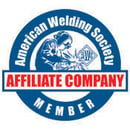Maritime CNC Machining & Welding Services
When fabricating maritime components, Superior Joining Technologies knows these components must withstand extreme heat, wet conditions, and bitter cold. We offer CNC machining, welding, and NDT services for the maritime industry that keep these harsh environments in mind.
The Capabilities of CNC Machining
At Superior Joining Technologies, we specialize in turnkey, 5-axis CNC machining services for the maritime industry. The result is high-precision components that can be relied on. We have the capability to fabricate finished parts from practically any material. Some of the most common materials that we work with include aluminum, tool steel, stainless steel, titanium, tungsten, and Inconel.
Benefits of CNC Machining in the Maritime Industry
A key benefit of CNC machining is the precision it offers. With CNC machining, Superior Joining Technologies offers tolerances of +/-.0002”. Other benefits include:
- Consistent, repeatable results
- Manufacturing cost savings
- Increased efficiency
- Improved production speed
- Reduced downtime
- Heightened safety
- Superior surface finish
- Complex or ruled surfaces machined in one pass
- Compound angle holes and undercuts cut quickly and accurately
- Any shape or form is possible
Components For Maritime Applications
- Ship
- Boat
- Yacht
- Sailing ship
- Barges
- Cranes
- Oil platforms
- Marine wind farms
- Large water reservoirs
- Pipelines
Welding Services
At Superior Joining Technologies we provide welding services for the maritime industry including shipbuilding and offshore construction. These demanding applications require heightened weld quality and consistency to perform optimally.
- GTAW – GTAW is the process that joins critical components while producing welds with the utmost quality and purity. Includes NADCAP Manual GTAW, Micro GTAW, and Longitudinal Seam GTAW.
- Nadcap Laser Beam Welding – Laser beam welding uses a precisely focused beam of light to fuse metal together. Used on hard-to-access areas and extremely small components. Includes Micro Laser Beam Welding, Laser Beam Welding with Powder Deposition, and Multi-Axis Laser Beam Welding.
- Resistance Welding – Resistance welding joins metals by applying pressure and passing a current through the joined metal area. This includes Circumferential Seam Welding and Resistance Spot Welding.
Benefits of Welding in the Maritime Industry
At Superior Joining Technologies, we have high standards for our welding and testing processes that eliminate weld defects that can impact maritime components. Other benefits include:
- Reduced weight
- Reduced cost
- Improved performance
- Increased production speed
Superior Joining Technologies, Inc is an AS9100, ISO9001, and Nadcap-accredited facility and service, provider. Our welding processes are approved by Boeing, GE, Unison, Collins Aerospace, and Safran.
Materials for Maritime Components
The maritime industry requires a variety of metals for their welded components ranging from standard steel to more exotic metals. Some of these include:
- Aluminum
- Carbon steel
- Inconel
- Stainless steel
- Titanium
- Monel
NDT Inspection Services
Superior Joining Technologies offers NDT testing for the maritime industry. Our testing processes prevent inconvenient, expensive, and dangerous component failures caused by flaws in a machined or welded component. Non-destructive testing (NDT) is a group of analysis techniques used to evaluate the properties of materials, components, or systems without causing damage. This evaluation method detects imperfections that may negatively impact equipment performance and longevity, as well as user health and safety.
Superior Joining Technologies is a Nadcap-accredited leading provider of surface flaw detection assessments. We work to verify the reliability and safety of materials, products, and equipment with industry-leading surface inspection services. NDT testing is critical in the maritime industry. NDT is used for the qualification of new materials and during the testing and certification process to test performance and durability. They also test the quality of the materials and joining process during and after manufacturing. These NDT processes are the necessary steps to ensuring high standards of quality and safety.
- Visual inspection, also called VI or VT – Uses the naked eye to look over a piece of equipment for flaws. It is used for internal and external surface inspection.
- Liquid Penetrant inspection, or PT – Identifies surface discontinuities. It is ideal for use on non-porous materials. Liquid penetrant is pulled into cracks by capillary action. A developer is used to draw out penetrant from the crack and produce a surface indication. Our PT process includes sensitivity levels 2, 3, and 4.
- Magnetic Particle Inspection, MT – Detects surface and shallow subsurface discontinuities in materials such as iron, nickel, cobalt, and alloys. In this process, an electrical current is run through the component. Any crack or defects will interrupt the magnetic lines of flux and cause magnetism to spread out, which creates a flux-leakage field at the damage site. This field will draw metal particles that have been spread over the component to any flaws on or near the surface and create a visible indication of its approximate size and shape.
The Superior Joining Difference
Superior Joining Technologies, Inc is a woman-owned small business that works hard to provide high-quality products for our customers. We are a trusted provider of CNC machining, precision welding, additive manufacturing, laser marking and cutting, and NDT inspection services for the maritime industry.






